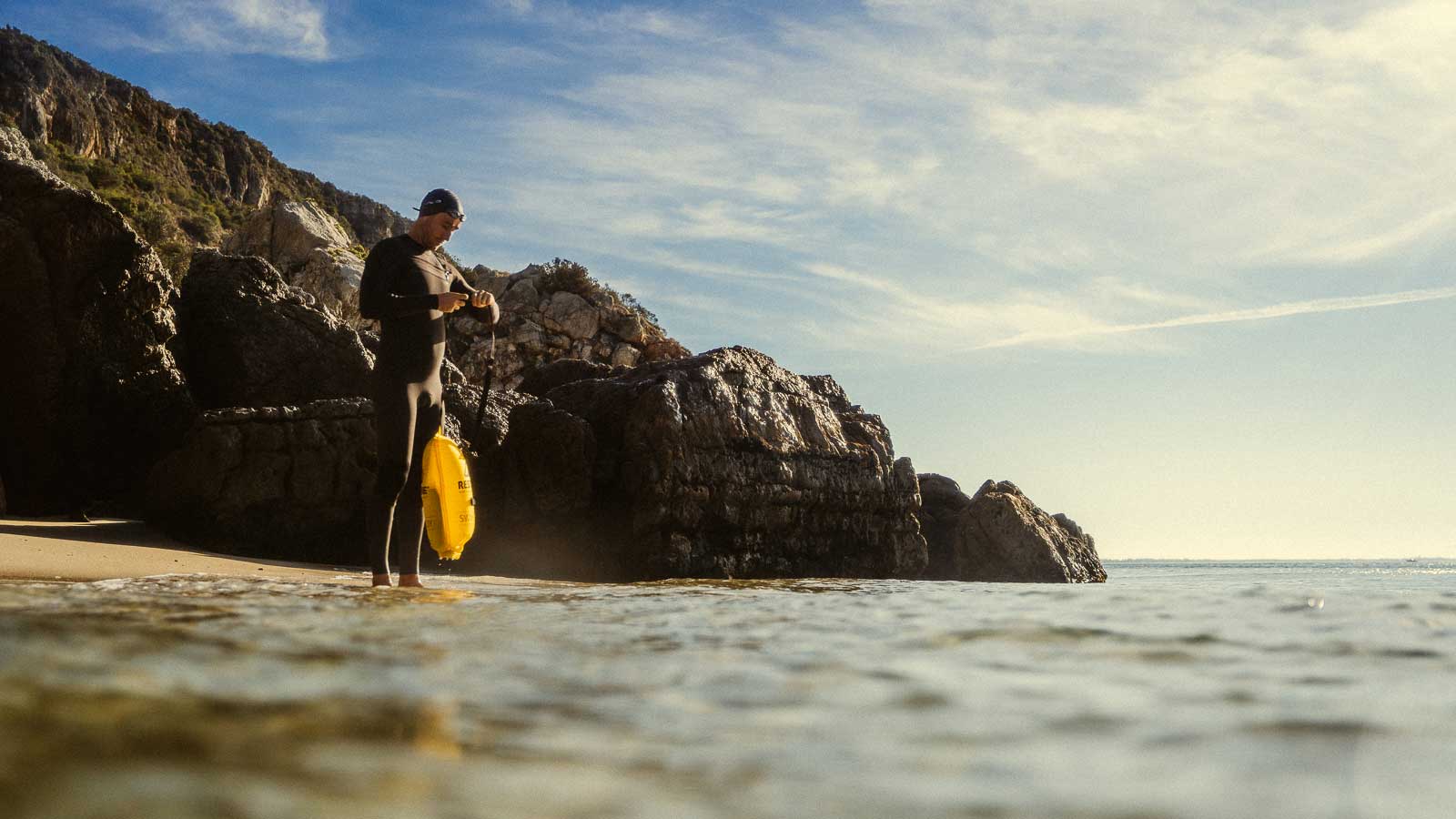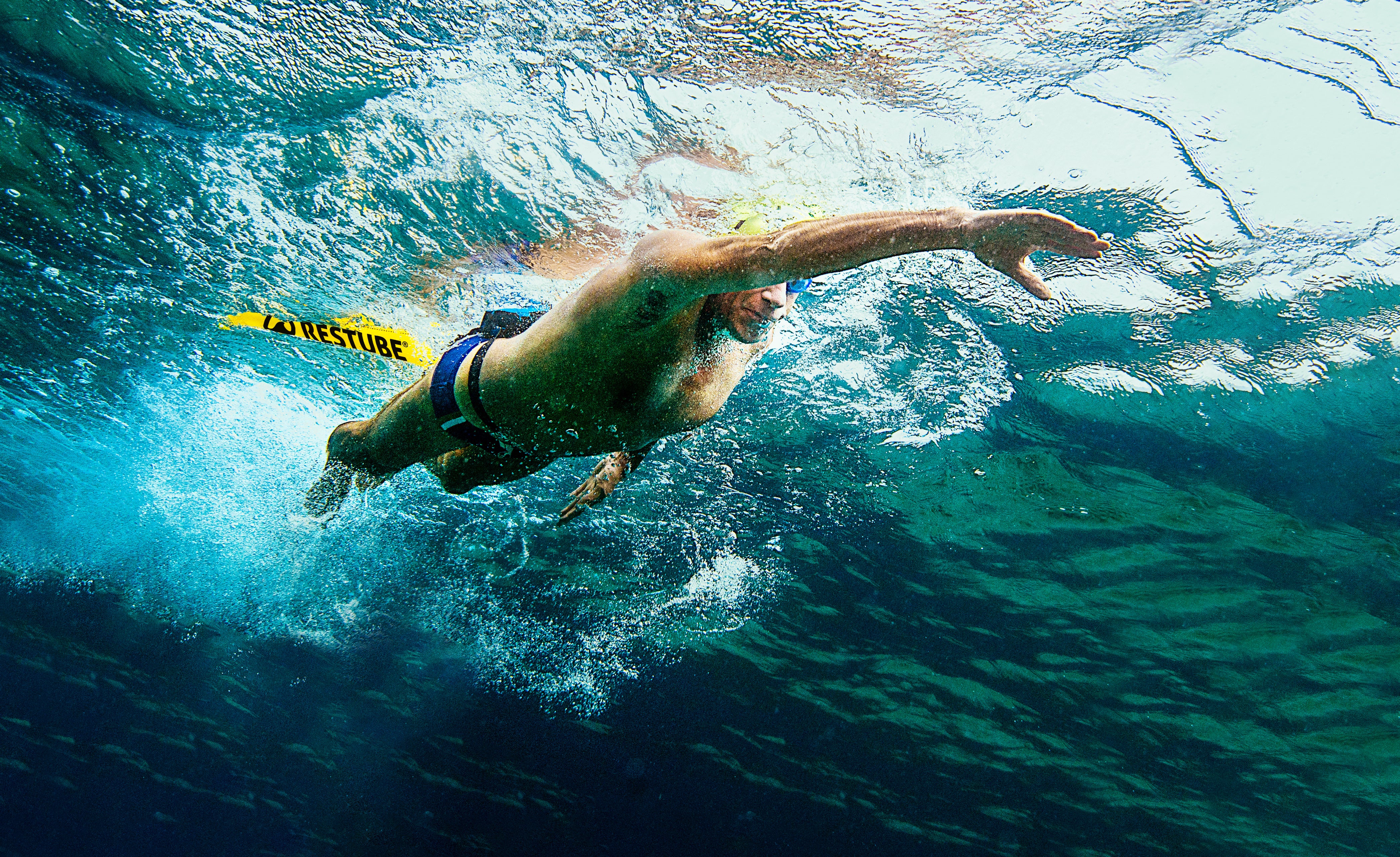
Eisschwimmen: eine eiskalte Leidenschaft, die die Welt erobert
Lerne die Gesundheitsvorteile kennen und erhalte Tipps für deine Sicherheit

by Johanna | Restube
published on October 15, 2023
Fotocredit Josef Köberl @ Barbara Anderl
In recent years, an unusual activity has spread around the world and is inspiring more and more people: ice swimming, ice bathing or also called winter swimming or cold plunge. In this extreme discipline, courageous people dive into ice-cold waters and swim in temperatures close to freezing point. But what exactly is behind this unusual trend and why is it captivating more and more people?
We tracked down the phenomenon of ice swimming and explored the history, health benefits and safety aspects for you. We also introduce you to Josef Köberl, an expert in ice swimming who passes on his knowledge to interested people in courses and training sessions.
Die Geschichte des Eisschwimmens
Ice swimming is not an entirely new activity. In various parts of the world, especially in countries with long, cold winters such as Russia and Finland, people have been practising swimming in frozen lakes and rivers for centuries. In those countries, it served not only as a sporting activity, but also as a kind of test of courage and cultural ritual.
However, the modern trend of ice swimming has gained momentum in recent decades. Today, ice swimming is far more than just a tradition. There are now organised competitions and events around the globe where ice swimmers can compete. These events attract not only experienced athletes, but also increasingly recreational ice swimmers looking for a next level challenge.
Ice swimming can boost your health
Auf den ersten Blick mag es nicht offensichtlich erscheinen, aber Eisschwimmen bietet eine Vielzahl an gesundheitlichen Vorteilen. Sie sind sicherlich auch ein Grund, warum das Eisschwimmen immer beliebter wird.
"Kaltes Wasser hat mich als Mensch verändern. Früher war ich impulsiver, wenig ausgeglichen, fokussiert ja, aber ich hatte nicht so einen starken ausdauernden Fokus, nicht diese mentale und physische Stärke."
Josef Köberl

Stärkung des Immunsystems:
Das Eintauchen in kaltes Wasser kann das Immunsystem stimulieren und die Produktion von weißen Blutkörperchen fördern, was sehr wichtig zur Abwehr von Krankheiten ist.
Verbesserte Durchblutung:
The coldness of the water makes the blood vessels constrict, this is called vasoconstriction. After swimming in cold water, vasodilation occurs, and the vessels dilate again. This change can improve circulation and stimulate blood flow.
Stressabbau:
Das Eisschwimmen erfordert eine erhebliche mentale Stärke und kann dazu beitragen, Stress abzubauen und die psychische Belastbarkeit zu steigern.
Steigerung der Energie:
Many ice swimmers report a lasting energy boost after swimming in cold water that lasts all day.
Fettverbrennung:
Der Kälte ausgesetzt sein, kann den Stoffwechsel anregen und somit die Fettverbrennung fördern.
Erhöhte Widerstandsfähigkeit gegen Kälte:
Ice swimmers develop a higher tolerance to cold over time, and this may well be beneficial in everyday life.
Wim Hof, also known by his nickname 'The Iceman', invented a special breathing technique, called ‘The Wim Hof Method’. It involves repeated rapid inhalation and exhalation followed by a pause.
Sicherheit beim Eisschwimmen
Although ice swimming offers many health benefits - never forget - it is not without risks! The biggest danger in ice swimming is hypothermia, which occurs when the body loses too much heat and the body temperature drops dangerously.
In order to swim safely in cold water, a number of safety rules must be followed! Below you will find important points to consider.
Vorbereitung an Land:
Wärme den Körper mit sanften Übungen auf, bevor du ins kalte Wasser steigst. Achte auf eine ruhige und gleichmäßige Atmung.
Langsame Gewöhnung:
Beginners should not plunge into ice-cold water immediately. It is advisable to start slowly and gradually get used to the low temperatures. Cold showers can help you with this.
Beaufsichtigung:
Ice swimming should never be done alone. It is important to have someone nearby who can help you in case of emergency.
Aufenthaltsdauer:
Die Zeit im kalten Wasser sollte begrenzt sein, um das Risiko von Hypothermie zu minimieren. Übertreibe es also nicht, habe am besten selbst eine Uhr dabei, und gehe nicht über dein persönliches Limit hinaus.
Zusätzlicher Auftrieb:
To be prepared for the worst, additional buoyancy is a must. With Restube, buoyancy is discreetly stowed in your pocket and just a pull of the trigger away. If you want permanent visibility and buoyancy at hand, we recommend the Swim buoy by RESTUBE.
Ausrüstung:
Neoprenschuhe, Mütze oder Badekappe und Handschuhe schützen deinen Körper vor zu starkem Wärmeverlust.
People with health problems or risks must always consult their doctor before ice swimming. Cold water is not suitable for everyone!

Learn from the pro!
Josef Köberl ist Rekord-Eisschwimmer und veranstaltet regelmäßig Kurse und Trainings für alle, die Eisschwimmen selbst ausprobieren wollen.
Hier you can find information on courses and training sessions with Josef Köberl.
And to make sure you don't miss any updates and news from Josef, follow him on Instagram!
Ich hatte 2021 das Vergnügen, Josef bei einer seiner Veranstaltung persönlich kennenzulernen.
This video proves that she didn't miss the opportunity and threw herself into the ice-cold water (even if only for a few seconds) 😉






Leave a comment